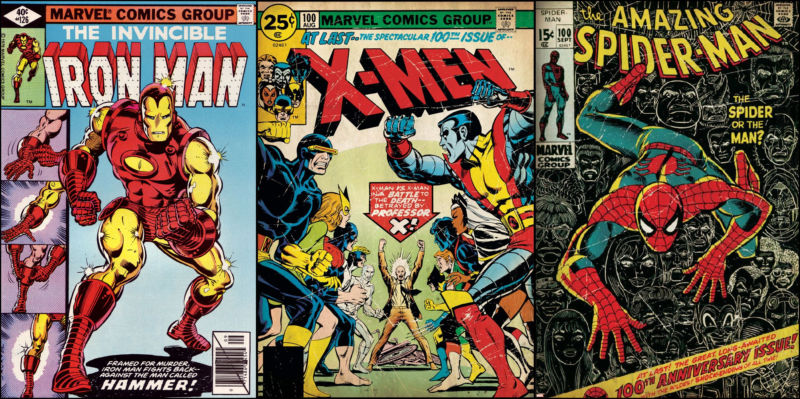
From Wonder Woman to Watchmen, it's not easy to envision what pop culture would be like today without the impact of superheroes. It's also not easy to comprehend how any comic book about a flying alien, or a furious green monster, or a super-soldier who defeats a whole army by himself has anything to do with the worlds of technology and science. But as we all know, appearances can be deceiving.
Although the influence of superheroes on modern culture is undeniable, the influence of modern culture on many superheroes remains hazy to this day. Comic creators, perhaps often wanting to maintain a little mystique, have historically been hesitant to get explicit about their inspirations. But when thinking through 80-plus-years-and-counting of our favorite caped crusaders changing slightly with the times, their real world analogues become clearer and clearer.
Science and science fiction
One of comics’ most iconic heroes might also be the perfect example of this. Since his first appearance in Action Comics #1 in 1938, Superman has adapted to the times. The "Man of Steel" we saw in 2017's Justice League didn't just happen overnight, after all. Superman’s long term evolution is the result of many transformations and technological advancements throughout the decades.
Back in the beginning, his creators, Jerry Siegel and Joe Shuster, were huge fans of pulp science fiction and adventure magazines. As a result, some of the first clear influences seen in Superman come from such stories', which often featured characters who possessed incredible abilities such as superhuman strength, telepathy, and clairvoyance. Some of these early influences include John Carter of Mars, a character from the sci-fi novels by Edgar Rice Burroughs; Hugo Danner, the main character in the novel Gladiator by Philip Wylie; actors Johnny Weissmuller, Douglas Fairbanks, Harold Lloyd, and Clark Gable; and several strongmen of the early twentieth century, whom Shuster idolized as a child.
Given its heavy influence on society at the time, religion also seemed to appear on the long list of things that informed the birth and evolution of the first mainstream superhero. Both Siegel and Shuster were Jewish, for instance, and this led many comic book fans (including Rabbi Simcha Weinstein and the British novelist Howard Jacobson) to the disputed conclusion that Superman's main influence was Moses.
Siegel and Shuster never confirmed this claim, suggesting that the idea of Superman falling to Earth from the sky simply seemed like the coolest possible idea at the time. Instead, the only sources of inspiration for Superman's initial powers that Siegel and Shuster openly admitted to were those of animal science and Newton's law of universal gravitation. For instance, they accentuated that because Earth is a much smaller planet than Krypton, the lighter gravitational pull further enhanced Superman's strength. They also borrowed feats from the animal kingdom, drawing a parallel between Superman's amazing strength to that of an ant's incredible ability to carry hundreds of times its own weight. And the duo compared a grasshopper's ability to leap great distances with Superman's ability to leap from one place to another.
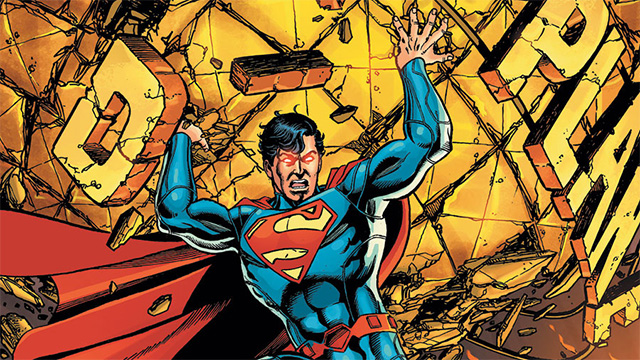
Tall buildings in a single bound via transportation
Many newer fans of Superman might not know that he couldn't always fly. He only started flying in the early 1940s—which, coincidentally, is shortly after Heinkel He 178, piloted by Erich Warsitz, became the world's first aircraft to fly purely on turbojet power on August 27, 1939.
Some may think that this is a mere coincidence and that the developing technology behind high-speed flight had nothing to do with Superman's newfound superpower. Some may even suggest that leaping simply wasn't appropriate stylistically or even practical anymore, as the stories of Superman began to migrate into the worlds of animation and radio during the early 1940s. This is partly true. In the very first Fleischer Superman film, The Mad Scientist, Superman leaps rather than flies. But the result wasn't very good, aesthetically speaking. In addition, the technical difficulties of having Superman "jump" around made editing a strenuous task for the films' producers, as they didn't have the proper editing equipment to do so back then.
A poor initial film aesthetic wasn't the only reason Superman soon started flying, though. In fact, the dynamic progress in flight technology during the late 1930s and early '40s and the rapid evolution of the turbojet gave Superman more than the ability to fly—it also gave him a new home. In his debut, Superman is a nameless baby appearing from an unnamed doomed planet. His father was a scientist who put his son in a spaceship to save him from the ensuing destruction. One day this spaceship lands on Earth, and this is the only description provided by DC Comics about Superman's days on Krypton for pretty much the next seven years.
But in 1945's More Fun Comics #101, which introduced us to Superboy, we learn more details about Superman's technologically advanced planet and his birth name: Kal-El. We also learn that his previously undescribed spaceship didn't just randomly land on Earth; Siegl and Shuster upgraded it to an experimental rocket that violently crashed to Earth before it was discovered in Smallville by Jonathan and Martha Kent. All this creative reconstruction of Superman's background became possible because of the advancements in flight of that era, especially the period from 1936 to 1943. During that time, aviation engineers solved most technical difficulties and launched the age of the mass production of the Junkers Jumo 004, the world's first production turbojet engine in operational use and the first successful axial compressor turbojet engine.
So as he jet-propelled forward, Superman didn't only become the first superhero to go viral, he also became the archetype by which the industry would define itself. The golden age of comics, which basically launched with Superman in 1938, produced several iconic superheroes and villains in the years that followed. As they continued creating heroes to follow Superman, DC Comics continued to leverage their initial formula, drawing on some combination of animal science, religion, and mythology for the creation of superheroes like Wonder Woman, the Flash, and Aquaman; even for notorious villains such as Catwoman and the Penguin.
There was a bright exception to this rule, however—an exception going by the name of Batman. Unlike other superheroes of his time (and despite a very nature-y name), Batman was all about technology. And his "fathers," artist Bob Kane and writer Bill Finger, made sure to heavily emphasize this by not giving him any superpowers at all.
For the unfamiliar: In contrast to Superman, Batman is all man and from here on Earth. He's an ordinary guy with a lot of money and a very specific goal: He's determined to avenge the terrible loss of his parents, who were murdered right in front of his innocent young eyes. In this battle for truth and justice, Batman relies solely on technology and his combat skills. Unlike Siegel and Shuster, Batman's creators were pretty clear about their influences from the very first moment they imagined Batman.
Inspired by Leonardo da Vinci's sketch of a bat-winged flying machine—a technological marvel of its day—Batman makes up for all the superpowers he doesn't possess with a wide variety of interesting gadgets, including a utility belt, batarangs, and every high-tech device you can think of. His entire presence and activity in comic books (and subsequently on TV shows, in cartoons, and films), closely follows the advancements of twentieth-century technology. It wouldn't be much of an exaggeration if someone were to claim that no other fictional character in history has promoted speedy cars, computers, cell phones, unrealistic-looking planes, and numerous other hi-tech devices, the way Batman does has his frequent use of bleeding-edge tech. Maybe unnamed Big Tech corporations in the headlines use this stuff for nefarious reasons, but Batman does all this in his quest to be a step ahead of his enemies and every dangerous criminal that threatens Gotham City.
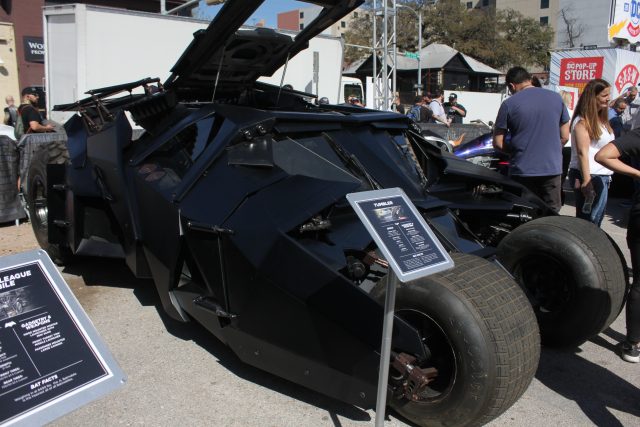
Military technology changes comics
When it comes to specific types of tech, Batman is also the first major superhero whose appearance has been so heavily inspired by military tech. This may be most obvious in how his costume has changed throughout the decades, from a cloth suit to an impermeable combat gear in films like Christopher Nolan’s Dark Knight trilogy.
Of course, fans of one Tony Stark's willl probably disagree with that last Batman statement, which is the reason I made sure to say how Batman was the first and not the only, or the best, superhero created utilizing military technology. That honor belongs to Iron Man, and rightfully so, but Iron Man made his first appearance in Tales of Suspense #39 back in 1963, 24 years after Batman. This could mean that Stan Lee and Larry Lieber were inspired by Batman as much as the tech itself when they were creating the most hi-tech superhero in history.
Lee never admitted such a thing openly, and he instead cited a real-life personality, Howard Hughes, as Stark's only influence. Nonetheless, like Batman, Iron Man comes from a wealthy family. They both mourned the loss of their parents at a young age and inherited a vast fortune. Bruce Wayne owns Wayne Enterprises, while Tony Stark is the absolute boss of Stark Industries. Bruce Wayne has Alfred, while Tony Stark has Jarvis. They both love armored suits and gadgetry and they both use science and technology against crime. Just like Batman, Iron Man lacks superpowers. The only difference is that the time Bruce Wayne spent learning martial arts, Tony Stark dedicated it to study engineering and physics. He entered MIT at age 15 and received his master's before age 20. His extremely high IQ and highest-level education is his only "superpower."
Even if the similarities with Batman were only coincidental, Lee and his colleagues could never deny the immense influence of modern technology on the development of Iron Man. (The famous metallic superhero was really kind of a “human satellite” not long after NASA launched Telstar, the first commercial satellite, in 1962.) An influence that became more obvious than ever before in 2013's Iron Man 3. Here we see Stark controlling several robotic Iron Man suits that fight for him, but without him being inside the suit as we were used to seeing until that moment. In reality he pilots the first drone superhero in history by just using a joystick. Apparently, Marvel Comics and the film's production team wanted to make it as obvious and blatant as it gets about their technological source of inspiration behind that scene: drones.
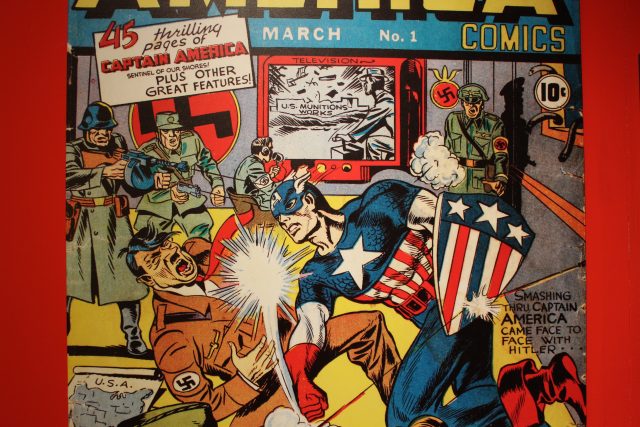
The comics of America's Army
Well before that film, however, the predecessor of Marvel, known as Timely Comics in the 1940s, wasn't as confident about technology and its consequences. After the Second World War broke out, America was hungry for a superhero that would be American, patriotic, and fight for the country in the biggest war humanity had ever witnessed. Despite the creators of Superman changing his slogan from fighting for "truth and justice" to fighting for "truth, justice and the American way," Superman was still too alien and too non-American. It was then that Joe Simon and Jack Kirby imagined Captain America. A patriotic super-soldier who would fight against the Nazis for Team USA.
Captain America debuted in March 1941 with the release of Captain America Comics #1. The cover portrayed the superhero punching Hitler and the issue went on to sell a whooping one million copies. What many fans may not know, however, is that Hitler's sick ideas were some of the sources of inspiration behind the creation of Captain America.
Adolf Hitler was a big fan of eugenics. He had openly expressed his admiration toward it in his book Mein Kampf, and the German dictator instituted eugenic legislation for the sterilization, euthanasia, or mass murder of those he deemed "inferior" human beings: the deaf, the blind, the poor, homosexuals, the Jews, and those with mental disabilities among others. Hitler literally forced the best-looking, strongest, and tallest German men and women to have sex in an attempt to birth a new generation of "superior" Germans.
According to newly uncovered secret documents in Russia (2005), the rumors that Josef Stalin had ordered, before Hitler, the creation of "Planet of the Apes-style" soldiers by breeding humans with apes have been verified. In the mid-1920s, Stalin hired the most decorated animal-breeding scientist in the Soviet Union, Ilya Ivanov, in his quest to build an army consisting of super soldiers that would be insensitive to pain and way stronger, faster, and tougher than any human being.
Simon and Kirby borrowed the dark ideas of the two most notorious mass murderers in contemporary history and gave birth to one of the most beloved superheroes in America. But these comic creators added a twist. Steve Rogers would most likely have ended up being executed in Nazi Germany or the Soviet Union for being too weak, too slow, too small, and too soft. So while the fictional American experiment named Project: Rebirth that transformed Rogers into Captain America may have been partially inspired by Hitler's and Stalin's experiments, it was completely in contrast to them ethically and ideologically. It didn't aim at the extinction of the weak, but instead gave these characters a new and improved version of themselves. And the result was much better looking than Stalin's army of ape-structured super-soldiers would have been.
The end of World War II saw Captain America's popularity and comic book sales plummet, just as the geopolitical relationship between the Soviet Union and the United States, two countries that had fought side by side during the war, did. The nations were now enemies in a Cold War that would never break out in the open, but would last for nearly half a century. When, in 1949, the Soviet Union developed its first atomic bomb, the confrontation between the US and the USSR escalated to a nuclear level, as the whole planet entered a new age of fear as the possibility of a global nuclear catastrophe looked greater than ever before.
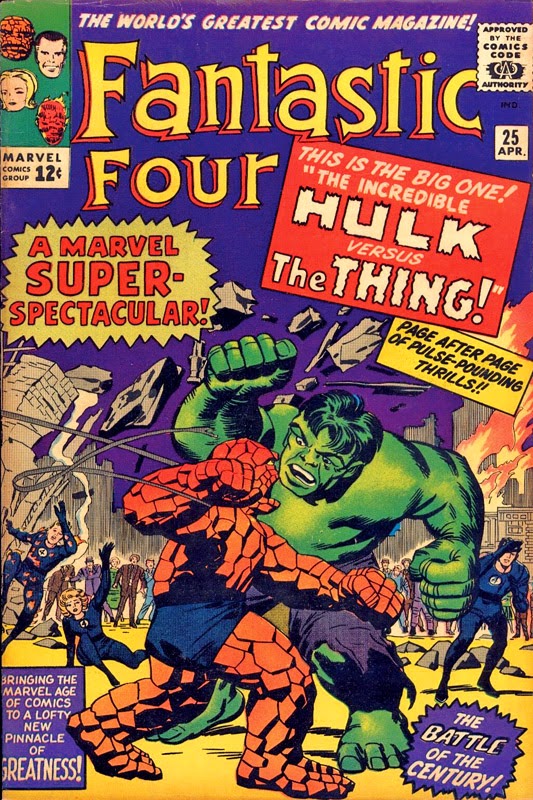
Cold War tech and science births a new generation
In the early 1960s the Cold War mania hit its highest with the Cuban missile crisis bringing the world a breath away from a nuclear conflict. During this period Stan Lee and Jack Kirby were reaching their own peak of creativity, creating many successful superheroes, or even whole teams of them. And while the likes of Thor, Spider-Man, the X-Men, Captain Marvel, and Black Panther were the offspring of the fantasy world hidden in the colorful minds of Lee and his peers, we can't say the same about some other superheroes of the silver age of comic books that Marvel dominated commercially.
The space race was undoubtedly the ultimate battlefield of the Cold War, technologically speaking. The Soviet Union took an early lead sending a man into space on April 12, 1961. This was the very first manned space flight and the legendary Soviet cosmonaut Yuri Gagarin was celebrated worldwide as an icon and hero. The scientists of that era, though, were concerned about Gagarin's health, as well as the health of all the astronauts who were taking part in the space race. They knew that at ground level cosmic rays are generally not a problem. However, they were afraid that the effects of cosmic ray radiation in space—which is of much higher energy than those that reach the ground—could be dangerous for the human body. There were theories suggesting that cosmic rays could possibly change the DNA makeup by hitting individual cells, and may even cause unforeseen changes in human evolution.
Even though we learned that cosmic rays aren't fatal, or won't make us invisible, stretchy, rocky, or set our body on fire, Stan Lee and Jack Kirby found a unique and positive way to celebrate this incredible human accomplishment, even if theoretically they were in different "camps" from Yuri Gagarin. Not so coincidentally, a few months after Gagarin became the first man to reach outer space, four normal individuals from the Marvel Universe were gaining superpowers by being exposed to space cosmic rays. The Fantastic Four debuted back in November 1961 and the creativity of American comics returned in triumph.
The concept of a bleeding-edge science biological accident soon spread in the comic world. Just a year after the Fantastic Four, for instance, came the conception of Ant-Man. Stan Lee, Larry Lieber, and Jack Kirby co-created and presented Ant-Man for the first time in Tales to Astonish #35 in September 1962. The original Anti-Man was a biochemist by the name Dr. Henry "Hank" Pym. Similar to Tony Stark, Pym is a scientific genius with a PhD in biochemistry and nanotechnology, and he also has a deep knowledge of quantum physics, robotics, artificial intelligence, and entomology. And after several experiments on himself, Pym finds a way to alter his size and get as small as an ant.
While his name refers to an insect, ala Spider-Man, in reality Ant-Man is a pure product of nanotechnology and, more specifically, of microchips. When we think of microchips nowadays, we usually tend to think of computers, smartphones, and GPS. Back in the 1960s though, the air force used microchips to design the Minuteman II missile, while NASA used them for their Apollo project. The bright minds behind the invention of microchip technology were Jack Kilby and Robert Noyce, who, in 1959, ushered the world into a whole new era: the computer age. The invention of microchips opened new horizons in technology and engineering by offering the ability to replace the huge transistors of the past without losing any power, just as Ant-Man can shrink down to the size of an insect while maintaining his normal power and strength in his fight against crime.
Unfortunately, the stories of two other popular superheroes of the same time weren't as joyful as that of Ant-Man—they didn't celebrate any technological advancement, they grappled with its potential dark side. The Hulk is one of the most cursed and tortured superheroes the art of comics has ever created, as he has expressed more fear and agony about man-made technology than any other superhero before or after him. Suffering from severe anger issues that transform him into a big green monster, the Hulk's main inspiration came from Frankenstein, according to Stan Lee. (For the uninitiated: In the classic novel by Mary Shelley, a young scientist named Victor Frankenstein creates a grotesque creature in an unorthodox scientific experiment.)
Through the Hulk, Stan Lee and Jack Kirby demonstrated in a very inventive way the global catastrophic risk of a possible nuclear conflict between the two main antagonists of the Cold War. Bruce Banner isn't the soulless creation of bad science as is the monster in Frankenstein. Instead, he is a bright nuclear physicist who had the grave misfortune of getting exposed to a high dose of gamma rays. The gamma rays that mutated Bruce Banner's DNA and transformed him into the Hulk wouldn't be as "kind" to the human population if they were uncontrollably emitted during fission in nuclear explosions, and Jack Kirby was quite vocal about it. In Marvel: Five Fabulous Decades of the World's Greatest Comics, Les Daniels, the book's author, addresses the Hulk as an embodiment of cultural fears of radiation and nuclear science. He quotes Jack Kirby as stating, "As long as we're experimenting with radioactivity, there's no telling what may happen, or how much our advancements in science may cost us."
But the Hulk wasn't the only superhero who emphasized and embodied the panic and horror of the comic-book world in the atomic age. Matt Murdock was another tragic figure in the Marvel Universe who became a victim of nuclear power. In his attempt to save a blind man from an oncoming truck, Matt loses his own sight via a radioactive substance that falls from the vehicle. The exposure dramatically increases his other senses, and this is how another cursed superhero, Daredevil, joined the Marvel pantheon in 1964.

Waiting for the AI, CRISPR driven heroes
Just as the passage of time brings about a lot of change in the technological world, a lot of things changed in the world of entertainment over the decades, too. For comics specifically, The Bronze Age (1970-1984) abandoned the successful formulas of the two previous periods and attempted to bring social realism to and address adult issues in comic books. The technological and scientific concerns of the past were now replaced with the wild sexual revolution of the 1960s and '70s. Commercially, the glory days of the golden and silver ages of comic books, when you had to wait for hours in long lines outside a shop to get the latest issue of Batman or Iron Man, slowly disappeared.
Other forms of entertainment soon began eating away at comics’ influence. The rapid evolution of video games in the late 1970s and throughout the '80s, and the costly productions of the film and television industries, kept pushing the already declining sales of comic books to historic lows. Sci-fi blockbusters such as Blade Runner, Terminator, Robocop, and Predator, which were and continue to be aided by constantly improving special effects and CGI technology, were now expressing the fears and agonies of the scientific and technological advancements of the near future more vividly and realistically than any comic book could. So, somewhat ironically, what inspired its greatest heroes now became a big threat: technology-driven films seemed to be usurping comic books.
Seemingly aware of the changing era they were entering, giants Marvel and DC Comics decided during the 1990s to go with the flow and ally themselves once again with the current moment's technology. Iconic characters from Superman (Lois and Clark) to Batman (The Animated Series) and seemingly everyone in between ultimately transitioned into TV shows or film series. And looking back from 2019, the results seem to have justified that pivoting decision. In 2019, Avengers: Endgame became the highest-grossing film of all time, with a breathtaking $2.8 billion worldwide gross. Twelve out of the twenty-five highest-grossing films in history are currently superhero films.
While comics still exist, screens are now the dominant way many fans take in superheroes. And as such, Marvel and DC Comics have never been in a better situation financially and commercially. The problem is that for much of the past 20 years, all they keep doing is reproducing on the big screen the classic stories of the past. As a result, current technologies seem less influential on the evolution of our favorite superheroes than before. But there’s no shortage of boundary-pushing advancements today—from artificial intelligence to autonomous vehicles to CRISPR to the magic screens in our pocket—so hopefully the next generation of superhero tales can look to the past not only for IP, but for where it saw inspiration.
Theo is a law graduate and a freelance writer. He's the founder of Theo-Cracy blog, where you can find more of his work and contact him directly. When he’s not working, he usually plays video games, reads graphic novels, travels around the world, or investigates the culture of science fiction. He previously wrote about games focused on solving scientific challenges and how gaming changes as we age at Ars.
2020-01-04 14:30:00Z
https://arstechnica.com/gaming/2020/01/how-modern-tech-has-powered-our-favorite-superheroes-through-the-years/
CBMibmh0dHBzOi8vYXJzdGVjaG5pY2EuY29tL2dhbWluZy8yMDIwLzAxL2hvdy1tb2Rlcm4tdGVjaC1oYXMtcG93ZXJlZC1vdXItZmF2b3JpdGUtc3VwZXJoZXJvZXMtdGhyb3VnaC10aGUteWVhcnMv0gEA
Bagikan Berita Ini














0 Response to "How modern tech has powered our favorite superheroes through the years - Ars Technica"
Post a Comment